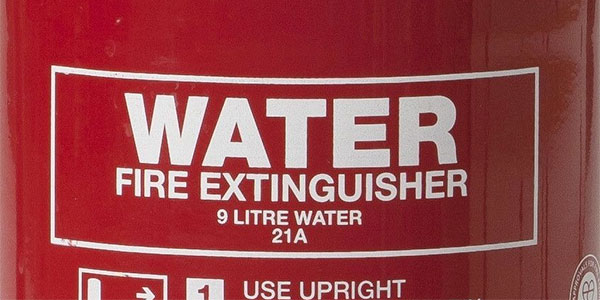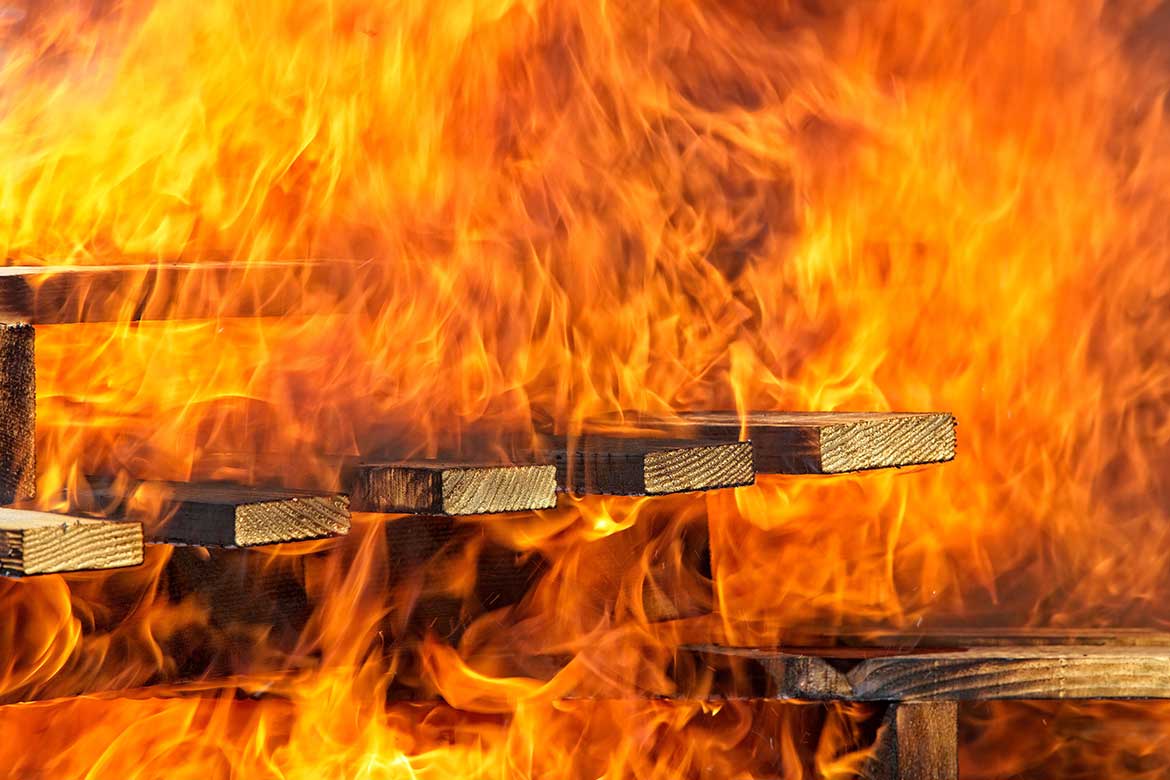2nd June, 2020
The 5 Types And Colours Of Fire Extinguishers And Their Uses
Fire extinguishers should tell you what type they are, and what class of fire you can use them on. In an emergency, do you have the time to check? Knowing fire extinguisher types is important, so you can act fast. Let's find out about the common types and colours you might need to use.

When you think about fighting fires, you might picture a fire extinguisher. After all, it's what people to use to put out a fire. Fire extinguishers are often seen in workplaces and public buildings, situated on fire escapes and entrance doors. They are located in places where they should be visible, and easily accessible. So it's no mistake if they caught your attention!
You sometimes see two or more fire extinguishers together, and there's a reason for this. All fire extinguishers are red. They look fairly similar to each other. But, look closer. Have you ever noticed the different colour labels on the extinguishers? Or even different shaped nozzles?
But why do we have different types of fire extinguisher? Because there are different classes of fire. The class of a fire usually depends on what is burning. Some fires might involve cooking fats, others might involve fuels or gases, others might be burning solids like fabrics or paper. And because all of these fires burn in different ways, they need different types of extinguishers to control and put them out.
Fire extinguishers should tell you what type they are, and even what class of fire you can use them on. But in an emergency, do you really have time to check the label and read the small print? Probably not. So knowing fire extinguisher types is important. So you can quickly find the one the need, and avoid doing more harm than good.
🧯 Water
For fire type A
🧯 Foam
For fire types A, B
🧯 Powder
For fire types A*, B, C, D, E
🧯 CO2
For fire types B*, E
🧯 Wet Chemical
For fire types A*, F
*limited suitability
Find out more about the different classes of fire in the 6 types and classes of fire.
You shouldn't just grab any fire extinguisher and use it on any type of fire. You could put yourself and others in danger if you use the wrong kind of fire extinguisher. For example, some types of fire extinguisher could kill you if used in a confined space (carbon dioxide), or used on an electrical fire (water).
Now we know why it is important to know about the different types and colours of fire extinguisher. Let's find out about the most common types you are likely to come across.
1. Water (White)
Water is usually the first thing you think of for putting out fires. And water fire extinguishers are probably the most common. This fire extinguisher is red with white writing and label. It mostly works by cooling the fire to extinguish it.

This type of fire extinguisher is simple to use. However, water fire extinguishers are only suitable for class A fires, which are fires involving solids. Like burning wood, paper, plastics etc.
Water Mist
A recent development in the types of fire extinguishers is water mist. Also red with white labelling, this type of fire extinguisher looks similar to water extinguishers but has some different uses.

In addition to class A, water mist can also be used for class F (cooking fats and oils) fires. Because the fine mist doesn't conduct electricity, they can also be used on electrical (E) fires! Water mist extinguishers can also be used on class B (liquid) and C (gas fires).
2. Foam (Cream)
Foam fire extinguishers are red with a cream label. Foam extinguishers primarily work by smothering fires and starving the fire of the oxygen it needs to burn.

Like water extinguishers, they can be used on class A fires. Foam extinguishers are also used on class B fires. These are fires involving liquids, like petrol and paints.
3. Powder (Blue)
Dry powder fire extinguishers are red with a blue label. Like foam, the non-combustible powder smothers the fire. Unlike foam extinguishers, this type of extinguisher doesn't contain water so can be used on live electrical equipment.

Powder extinguishers can be used on class B (liquid), class C (gases), and class E (or electrical fires). They also have some limited use on class A fires. While a useful multi-purpose extinguisher, power does have some downsides. Powder extinguishers are very messy when used. The use of this extinguisher can fill the air with powder causing visibility issues, and inhalation of powder. And, while it can be used on electrical equipment, power will enter equipment and can cause damage.
4. Carbon Dioxide (Black)
Carbon dioxide (CO2) extinguishers are red with a black label. You may also notice the nozzle on this type of extinguisher is a large cone shape. The carbon dioxide in this type of extinguisher replaces the oxygen in the air surrounding the fire, preventing combustion.

Carbon dioxide extinguishers are best used for electric (E) fires. They don't contain water and won't damage surrounding equipment like powder extinguishers. They can also be used on small class B (liquid) fires, but cooling effects on the liquid are limited and the fire may re-ignite after it has been extinguished.
5. Wet Chemical (Yellow)
Wet chemical fire extinguishers are red with a yellow label. It works by making chemical changes to burning oils, making them non-combustible.

This type of fire extinguisher was specifically designed to be used on cooking oils and fats. In fact, it's the main extinguisher used for class F (cooking fats and oils) fires. You should find wet chemical extinguishers and their yellow labels in kitchens with deep fat fryers. It's not much use on other types of fires, although some manufacturers versions are suitable for class A fires.
People who are expected to use fire extinguishers need to receive instruction and training on selection and use of the equipment provided. Only tackle a fire if you know what to do, and it is safe to do so. Fire extinguishers should be regularly checked and inspected annually.
Download the free fire extinguishers toolbox talk as a reminder for you and your team.
This article was written by Emma at HASpod. Emma has over 10 years experience in health and safety and BSc (Hons) Construction Management. She is NEBOSH qualified and Tech IOSH.
Fire Safety Course
Take our fire safety elearning course and get your certificate today.
Fire Safety CourseRecent posts like this...

14 Essential Hot Work Safety Tips
Hot work is a fire hazard and brings additional risks for both your workers and your site. If you need to do some hot work, like cutting, grinding or welding, stay safe with these hot work safety tips.
Read Post
The 6 Types And Classes Of Fire (And How To Put Them Out)
Not every fire is the same. Different types of fire have different hazards and risks. Using the wrong type of fire extinguisher could do more harm than good. There are six classes of fire, and each should be attacked differently to put them out safely.
Read PostWhy And When You Need Fire Drills
A fire drill is where you and your team practice the action to take in the event of a fire. Fire drills are an important part of fire safety training for your workplace. With regular fire drills, your team should know exactly what to do if there's a fire - and be able to get to a place of safety.
Read Post